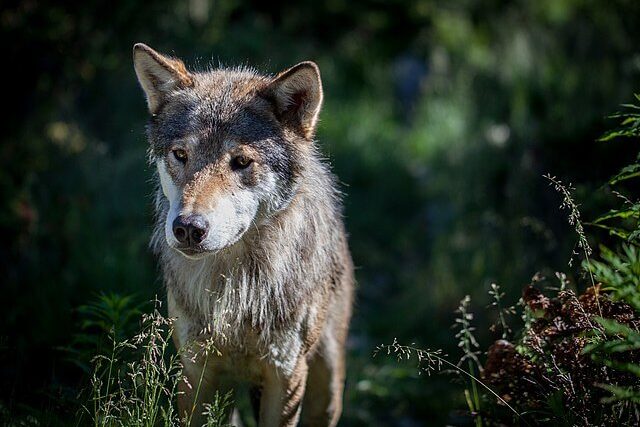
The return of wolves in Europe is causing both concern and excitement. For the first time in over 100 years, wolves have started to settle in Belgium, and while their numbers are relatively low, their resurgence is causing alarm among some communities, while being welcomed by conservationists.
Jan Gouwy, a researcher from the Flemish Institute for Nature and Forest Research (INBO), said, “The reason why they are back is mainly legal protection.”
Protection for wolves came in under the Bern Convention and subsequent 1992 EU Habitats Directive. This prohibited the deliberate capture or killing of a wolf, with a few exceptions.
“From the early 1990s, a lot has happened in Europe, and the wolf really started to disperse all over the continent,” Jan explains.
According to a Europe-wide assessment in September 2022, the total number of wolves in the 27 EU member states is likely to be in the order of 19,000. While the resurgence of wolves is not down to just one factor, legal protection has certainly played a significant role. Jan shows us how to track wolves along a countryside track in Belgium’s eastern province of Limburg. It’s not long before he spots a wolf print that most of us would never notice. The front paw track, lightly pressed into the mud, is probably just a few days old.
The diet of wolves in the area mainly consists of roe deer and wild boar, but around 15% of their diet is livestock. This is something local sheep farmer Johan Schouteden knows well:
“The wolf is always on our mind,” he tells me as we stand under a light drizzle of rain in a field where his sheep are grazing, hemmed in by an electric fence.
“We can use more wires, use more sticks. A wolf-proof fence doesn’t exist. The wolf is so smart, he overruns every fence.”
Dozens of his sheep have been killed since wolves first started reappearing in this part of Belgium in 2018. The situation has sparked protests in recent years, with 3,000 locals joining a demonstration in 2021. Johan says that while there is compensation for lost animals and money for electric fencing, this doesn’t cover the true cost.
“I want to live with the wolf,” he says. “If we get paid for all the extra labour and all the extra work we have to do.”
Others are advocating for more radical counter-measures, with some EU lawmakers recently voting for a downgrade in the wolf’s protected status. It was a non-binding resolution, but those in favour argue that the population can’t be allowed to grow without stronger controls. In Sweden, 57 wolves were shot between January and February in a government-licensed cull. Opponents have questioned the legality of the cull.
The issue gained fresh attention when Dolly, a pony belonging to European Commission President Ursula von der Leyen, was killed by a wolf in Germany last year. The wolf – whose official name is GW950m – has now been licensed for shooting as it’s been linked to repeated attacks. A Commission assessment of the wider situation isn’t expected to see the 1992 Habitats Directive reopened, but rather existing flexibilities explored.
While the resurgence of wolves is causing concern for some, there are also positives to their return. Jan explains that the predators help repress disease levels because they prey on the sick and the young.
“People need to adapt their behaviour. They need to build solid fences. If they do so, it’s perfectly possible to co-exist with wolves.”
“You need to ask if everything has to have a positive effect on the way we see it as humans,” he says.
“Maybe some animals just have a right to exist, not just because we find them useful.”
Overall, the return of wolves in Europe is a complex issue that requires careful consideration of both the benefits and challenges they bring. While legal protection has helped their resurgence, there is also a need to address the impact on local communities, particularly those who rely on livestock. Finding a balance between conservation and economic interests is essential, as is taking measures to reduce conflict between humans and wolves. With proper management, it’s possible for humans and wolves to coexist.
——————————————————————————
At Natural World Fund, we are passionate about stopping the decline in our wildlife.
The declines in our wildlife is shocking and frightening. Without much more support, many of the animals we know and love will continue in their declines towards extinction.
When you help to restore a patch of degraded land through rewilding to forests, meadows, or wetlands, you have a massive impact on the biodiversity at a local level. You give animals a home and food that they otherwise would not have had, and it has a positive snowball effect for the food chain.
We are convinced that this is much better for the UK than growing lots of fast-growing coniferous trees, solely to remove carbon, that don’t actually help our animals to thrive.
This is why we stand for restoring nature in the UK through responsible rewilding. For us, it is the right thing to do. Let’s do what’s right for nature!
Support our work today at https://naturalworldfund.com/ and join in the solution!

